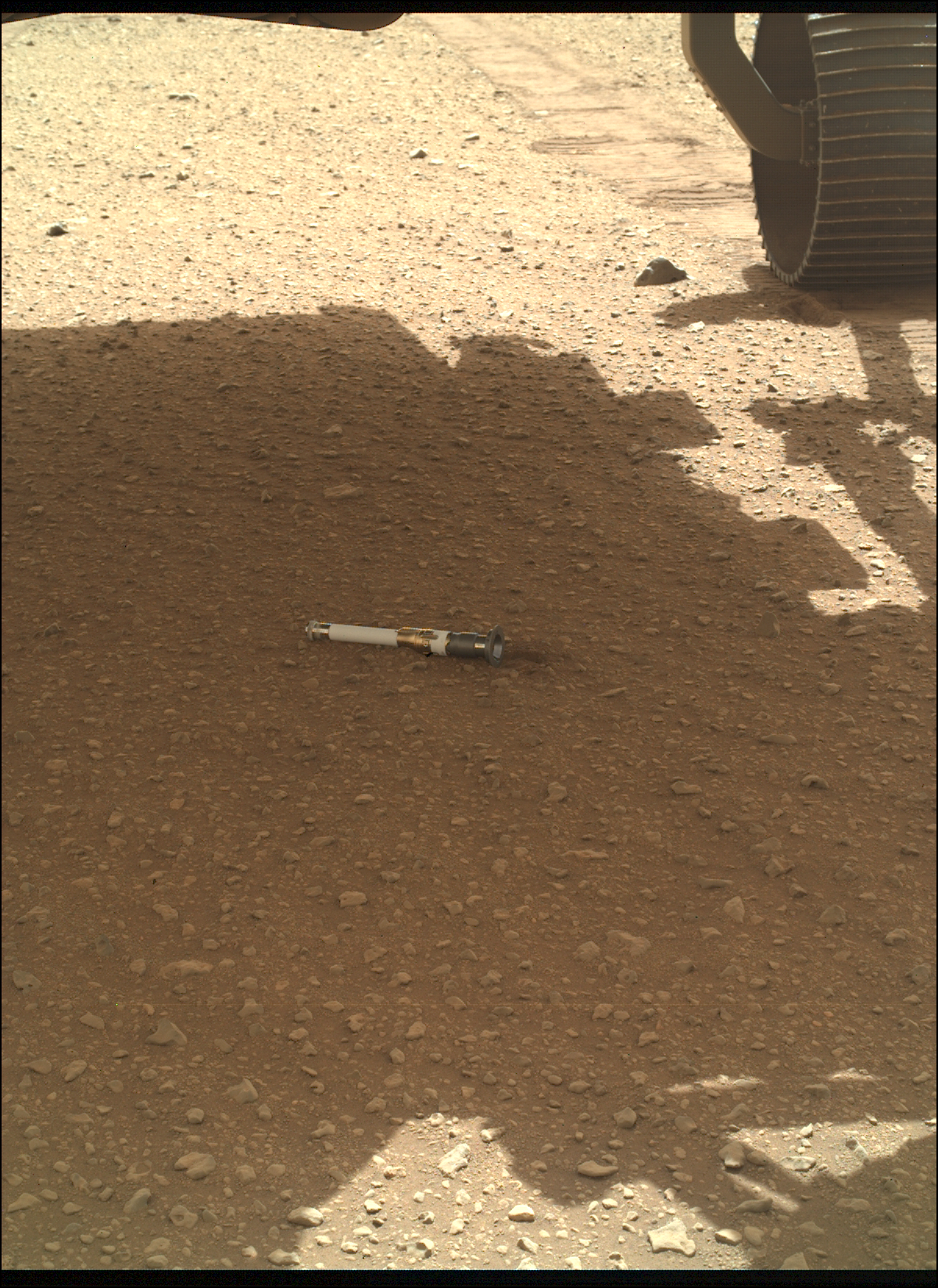
[ad_1]
Santa came early to Mars this year.
NASA’s Perseverance mission dropped its first cache of precious rock samples on the sands of Mars, leaving behind a record of material that a future mission could bring back to Earth. It’s a key moment in the search for life on Mars, NASA officials said in a statement on Wednesday (Dec. 21).
The rover’s contribution to seeking “ancient microbial life” in an old river delta, as NASA’s Jet Propulsion said in an update (opens in new tab), will include 10 titanium tubes deposited at this location, nicknamed “Three Forks.”
Sometime in the 2030s, if schedules hold, either Perseverance or two helicopters (similar to the currently flying Ingenuity Mars helicopter that finished its 37th flight days ago) will ferry rocky tubes like this in Jezero Crater to a waiting ship.
Related: Perseverance Mars rover to start caching samples for future return to Earth
This tube is a backup depot, however; Perseverance collects twin samples at each location and its mission calls for it to do the delivery itself, using the set of caches inside the rover. But if necessary, the helicopters could be called upon to pick up the backup tubes left on the Martian surface.
However the tubes get delivered, a spacecraft will launch them to space and hand the samples off to a waiting orbiter to return the Martian samples to Earth. Aside from a few meteorites carved off of Mars that fell onto our planet, the historic shipment will represent the first time Red Planet rocks have made it to Earth.
One of the key ingredients of life appears abundant on Mars, or at least it was in ancient times: Water. Huge canyons, vast icebergs and potential underwater reservoirs suggest Mars was rich with water in the ancient past, despite the planet’s dried-up and dusty appearance today.
But whether there was enough to support life requires “ground truth,” which is where Perseverance comes in. A rover can only carry so many instruments with it, however; sending the samples back to Earth will allow entire laboratories the chance to review the Martian bits for signatures of ancient life.
The first sample to hit the regolith is roughly the size of a piece of chalk, collected from an igneous rock nicknamed “Malay” on Jan. 31 in a region called “South Séítah.” South Séítah is itself significant; scientists announced weeks before taking the sample that they had found organics, a possible ingredient of life, in the same area.
The car-sized Perseverance took about an hour to spit out the tube from its belly, where the sampling and caching system resides. The tube fell three feet (89 centimeters) to a flat spot of the Martian surface as planned, and engineers on Earth imaged the area to make sure they don’t accidentally wheel over it as Perseverance drives away.
In photos: 12 amazing pictures from the Perseverance rover’s 1st year on Mars

The pictures came back showing the tube was well out of the way and flat, but NASA did have a contingency plan in place in case the tube ended up upright in the sand. “The mission has written a series of commands for Perseverance to carefully knock the tube over with part of the turret at the end of its robotic arm,” agency officials wrote.
Engineers tested the tube-flattening procedure with a Perseverance-like rover inside the “Mars yard,” an adapted sandbox at the Jet Propulsion Laboratory in Pasadena, California where machines are tested in conditions similar to the Red Planet. Upright deposits happened about five percent of the time in these simulations, which is why the mission has backup.
The milestone drop is happening just weeks before the end of Perseverance’s prime mission on Jan. 6, 2023; the mission will notch two Earth years on the Martian surface on Feb. 18. The rover will continue roving via a mission extension, based on its science publications and contributions like this to the sample return.
“It’s a nice alignment that, just as we’re starting our cache, we’re also closing this first chapter of the mission,” Rick Welch, Perseverance’s deputy project manager at JPL, said in the same statement.
Elizabeth Howell is the co-author of “Why Am I Taller (opens in new tab)?” (ECW Press, 2022; with Canadian astronaut Dave Williams), a book about space medicine. Follow her on Twitter @howellspace (opens in new tab). Follow us on Twitter @Spacedotcom (opens in new tab) or Facebook (opens in new tab).
[ad_2]